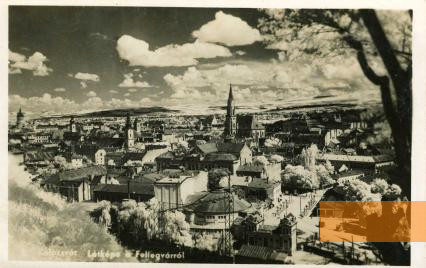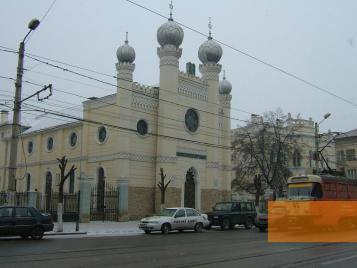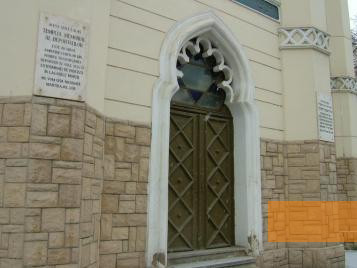Cluj (today: Cluj-Napoca, Hungarian: Kolozsvár, German: Klausenburg) lies in the north-west of Romania in the region of Transylvania. The Cluj Neolog Synagogue is dedicated to the approximately 18,000 Jews from Cluj and surrounding areas who were deported to Auschwitz-Birkenau between May and June 1944.
Cluj lies in the historical region of Transylvania in the north-west of Romania. After the First World War, Hungary had to cede Transylvania and part of Banat to Romania. In 1930, Cluj was home to about 13,500 Jews, representing just over one tenth of the town's total population. Many Jews in Cluj considered themselves Hungarians. At the end of the 1930s, Hungary began to increasingly raise claims to the ceded territories. In September 1940, Transylvania was divided under German and Italian arbitration and the northern part was annexed by Hungary. That same month, the Hungarian authorities began persecuting the Jewish population, and step by step Jews were excluded from public life. In July 1941, several hundred Jews without Hungarian citizenship were deported to Kamianets-Podilskyi and murdered by German units.
In March 1944, the German Wehrmacht occupied its ally Hungary, and employees of the »department for Jewish affairs« from the Reich Main Security Office under Adolf Eichmann arrived on site. The SS and Hungarian authorities began registering Jews, expropriating and deporting them. On May 3, 1944, Hungarian authorities assisted by the SS forcibly gathered the Jews of Cluj in a ghetto: about 18,000 Jews from Cluj and vicinity had to live in a brick yard in the north of Cluj. Between May 25 and June 9, 1944, all of the Jews were deported in six transports from the ghetto to the Auschwitz-Birkenau extermination camp.
In March 1944, the German Wehrmacht occupied its ally Hungary, and employees of the »department for Jewish affairs« from the Reich Main Security Office under Adolf Eichmann arrived on site. The SS and Hungarian authorities began registering Jews, expropriating and deporting them. On May 3, 1944, Hungarian authorities assisted by the SS forcibly gathered the Jews of Cluj in a ghetto: about 18,000 Jews from Cluj and vicinity had to live in a brick yard in the north of Cluj. Between May 25 and June 9, 1944, all of the Jews were deported in six transports from the ghetto to the Auschwitz-Birkenau extermination camp.
In the summer of 1941, following the annexation of Cluj by Hungary in 1940, several hundred Jews without Hungarian citizenship were deported to Kamianets-Podilskyi and murdered there. Jewish men were drafted for forced labour. On May 3, 1944, some 18,000 Jews from Cluj and vicinity were forced into a ghetto in a brick yard, from there they were deported to Auschwitz. About 388 Jews from the ghetto could be rescued by Cionist Rudolf (Rezső) Kasztner, later a politician in Israel, who negotiated their release in controversial talks with Adolf Eichmann. How many of the Jews deported from Cluj perished in Auschwitz is not known.
After the Second World War, about 6,500 Jews returned to Cluj. Most of them were originally from other towns. The majority of them emigrated to Israel in the following decades. The Neolog Synagogue, which was severely damaged during the war, was renovated in 1951. The Moorish building, built in 1887, has been under monumental protection since 2004. The synagogue, now called »Memorial Temple to the Deported«, is dedicated to the deported Jews of Cluj.
- Name
- Templul Memorial al Deportaţilor
- Address
-
Strada Horea 21
400174 Cluj-Napoca





